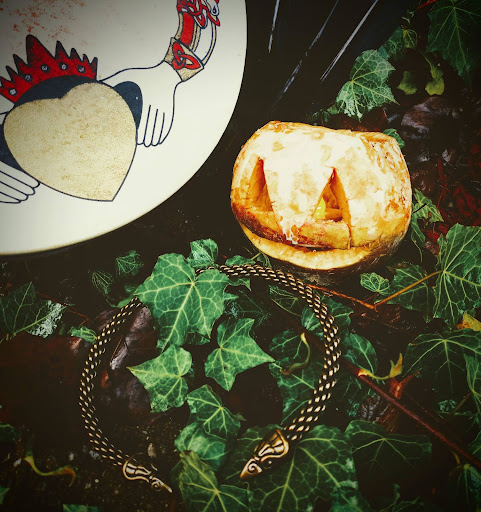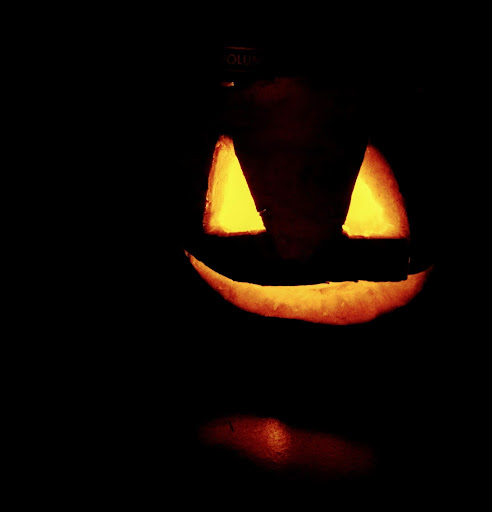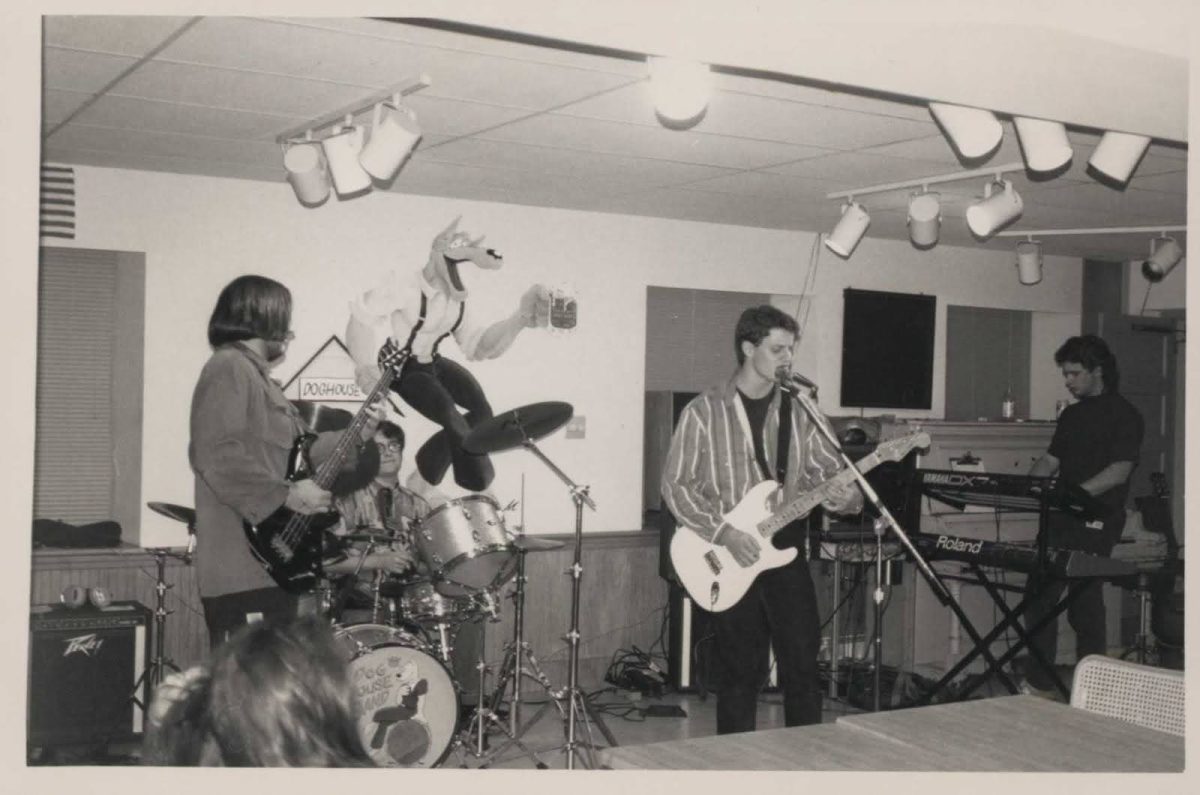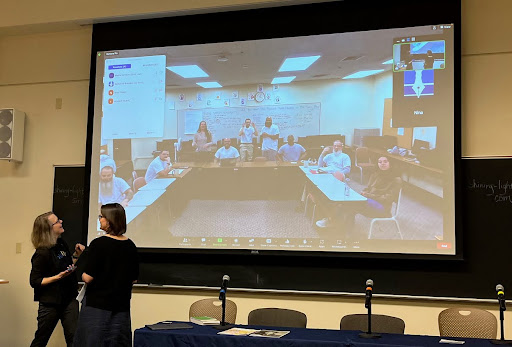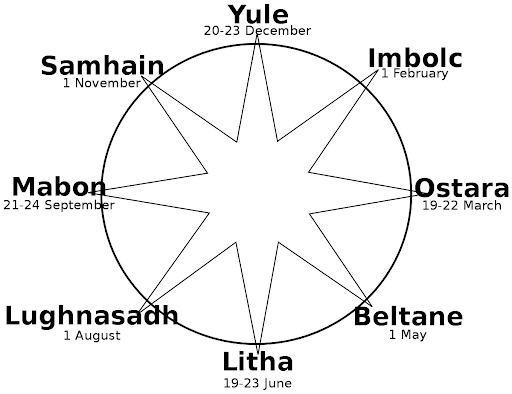
The word Samhain (pronounced Saw+een or Saw+in) means Summer’s End.
It marks the end of the harvest and the beginning of the “Dark Days.” Samhain night, the eve of 31 Oct. into 1 Nov., was said to be the night where the veil between this world and the Other World, that is, the domain where the Faerie folk and Tuatha de Danann (Too+ah+uh day Dahn+in) who once roamed Ireland freely, were forced into. Several places around Ireland were said to be portals to these Otherworlds. Samhain is a Fire Festival, one of the most important celebrations in the Irish tradition. It was not a celebration of darkness but rather of light and life. It was a time of remembrance and thankfulness as the darkness approached, and practices of the festival were intended to keep the light alive.
Samhain also refers to the month of November, approximately.
At Tara, in County Meath, the people of the surrounding villages made a trek one mile from town up to the top of the hill where they would light a great fire with intentions of warding away the Faeries said to come through the portal and into the mortal world. The fire and its light were said to capture the spirits of the wandering dead and of the Faerie folk and send them back to the Otherworld once more. This practice of lighting fires on Samhain became commonplace all throughout Irish history.
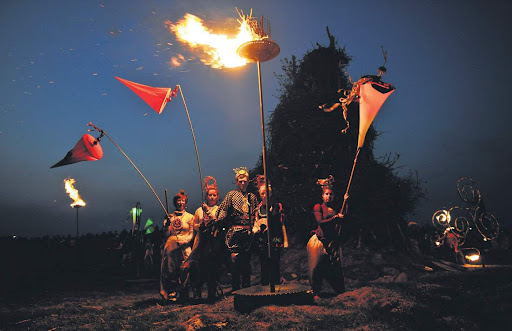
Across the country, similar practices began outside the stone age city of the Rathcroghan, the capital city of the Western Kingdom, Connacht. The site was a cave known as Uaimh na aGcat (Oh+Wi+Nah+Got), the Cave of Cats. This portal in particular was said to lead directly to the domain of the Ancient Irish goddess of war, death, and fate, The Great Phantom Queen herself, The Morrígan (Mor+ree+gun). Here, it was said she would unleash her Faeries, who were viewed similarly to Demons in later Christian perspectives, onto the mortal world in order to steal human souls and exact her revenge on the mortals who forced her and the other Tuatha de Danann underground.
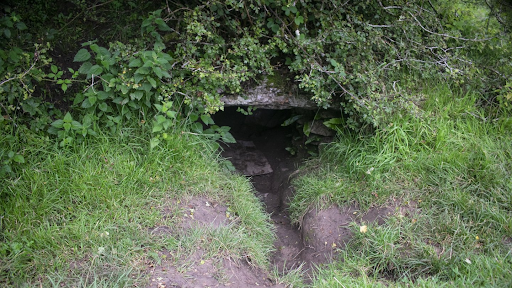

Trick or Treating was a tradition first birthed during the Middle Ages but had a supposed basis far earlier. From soul cakes and costumes to prayers for the souls of those passed, Trick or Treating itself has a rather curious history.
The people, in fear of The Morrígan and her Faeries, began several traditions. One included dressing up children to disguise them and trick the Faerie folk into thinking the human children were of their own and thus not taking them to the Otherworld. Some suggestions also exist of practices of human sacrifice involving a spiced honey cake called a Soul Cake, though this practice, in connection with the cakes, is highly contested. What the ancient Soul Cakes were intended for is up for debate.
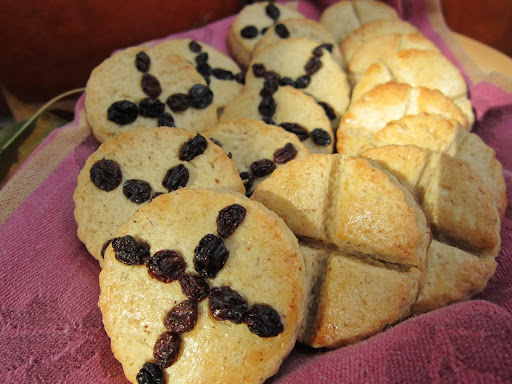
In the 11th century CE, the practice of “modern-day” Trick or Treating came about. Much different from the earlier pagan traditions, this new tradition came with the development of Christianity in Ireland. Families were encouraged to open their homes up on All Hallows Eve and the poor of the town could come to beg at the doorsteps of their neighbors. In return for the food they received, they would pray for the souls of the departed from that family. In some earlier cases, a trick or task could be performed in return for a cake similar to the ancient Soul Cakes.
Many stories of light exist within the narrative of Samhain and, in turn, of Halloween. Such is the tale of Stingy Jack of the Lantern. Jack, a deplorable man, made a deal with the Devil, a deal that would backfire on Jack upon his death. As such he was barred from both heaven and hell, but the Devil gave him an ember from the Hellfire so as to prevent him from having to wander in the cold and darkness of purgatory. He carved a turnip as a lantern, placing the ember within it. It is said that he still wanders in his eternal purgatory and will wander into your house to swindle you and take your riches. To deter him, people began carving their own lanterns out of turnips. Upon coming to America, this tradition turned from turnips to the much easier to carve pumpkin, the Jack O’Lanterns most people recognize today.
